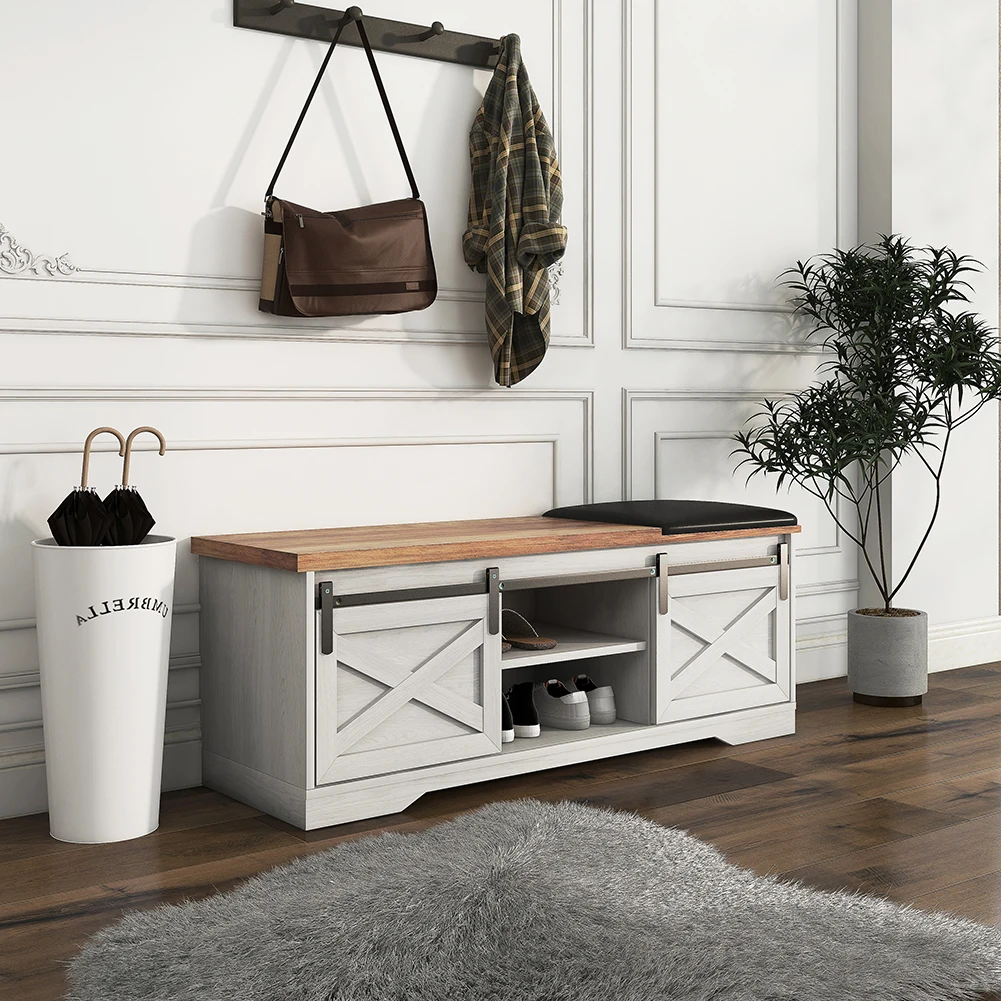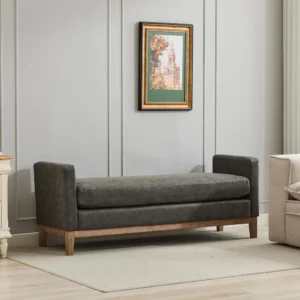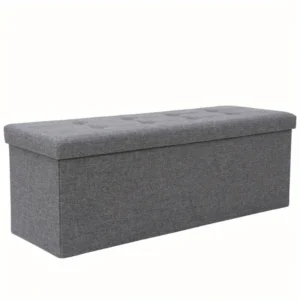The Benefits of Entryway Benches: Why They’re Worth Considering
The moment you step through your front door sets the tone for your entire home experience. An entryway bench isn’t just another piece of furniture—it’s a solution to the daily chaos that often accumulates in this high-traffic area. These versatile pieces serve multiple purposes simultaneously: a place to sit while putting on or removing shoes, a designated spot for storage, and an organizational hub that keeps clutter at bay.
For many homeowners, the entryway becomes a collection point for shoes, bags, mail, and other items that lack a proper home. According to home organization experts, the average household accumulates around 5-7 items per person in their entryway daily. An entryway bench addresses this common pain point by providing structure to this often overlooked space.
Beyond practicality, these pieces contribute significantly to your home’s first impression. The psychology of good entryway design suggests that organized, welcoming entrances reduce stress and create positive feelings upon arriving home. Multi-functional entryway seating transforms what might otherwise be wasted square footage into one of your home’s most useful spaces.
But do you actually need one? This is the question we’ll explore throughout this article, examining factors like available space, household composition, and lifestyle needs that influence whether an entryway bench is right for your specific situation. Various entryway bench options offer different solutions depending on your unique requirements.
Practical Benefits: Seating Comfort for Daily Routines
The simple act of having a dedicated place to sit in your entryway brings surprising comfort to daily routines. Think about those rushed mornings trying to balance on one foot while putting on shoes, or the awkward hop-and-struggle when removing boots after a long day. An entryway bench eliminates these small but annoying challenges.
For families with young children, the seating function becomes even more valuable. Parents can sit beside children to help with shoes, laces, and winter gear without the constant bending that strains backs. Similarly, elderly family members or those with mobility issues find the stable seating essential rather than optional—it provides security during the transitions of coming and going.
Even for the most agile among us, there’s something psychologically satisfying about having a proper place to transition between the outside world and your home. After a long day at work or running errands, those few moments of seated comfort while removing shoes can serve as a mini decompression ritual.
The comfortable seating options available for entryways range from padded cushions to ergonomically designed seating surfaces that make this daily routine more pleasant while complementing your home’s aesthetic.
Storage Solutions: Conquering Entryway Clutter
Perhaps the most compelling reason many homeowners invest in an entryway bench is the storage capability that helps tame the constant influx of items that enter our homes. Different storage configurations address specific organizational challenges:
- Shoe storage cubbies: Keep pairs organized and off the floor, preventing that pile-up of footwear that often occurs by the door
- Hidden compartments: Perfect for seasonal items like gloves and scarves in winter months, or sunscreen and hats during summer
- Open shelving: Ideal for frequently used items that need to be easily accessible
- Basket storage: Allows for quick clean-up by providing a designated spot to toss smaller items like keys, mail, or pet leashes
The average family of four owns approximately 20-25 pairs of everyday shoes collectively—that’s a lot of footwear competing for floor space in your entryway! When these items lack a proper home, they create both physical and visual clutter that impacts your daily experience.
Smart entryway storage seating solutions combine the comfort of seating with intelligent organization systems. Studies show that having designated storage spaces can reduce the time spent searching for frequently used items by up to 15 minutes per day—that’s nearly two hours weekly that could be better spent elsewhere.
The vertical storage that many entryway bench storage units provide makes excellent use of typically unused wall space, essentially creating storage where none existed before.
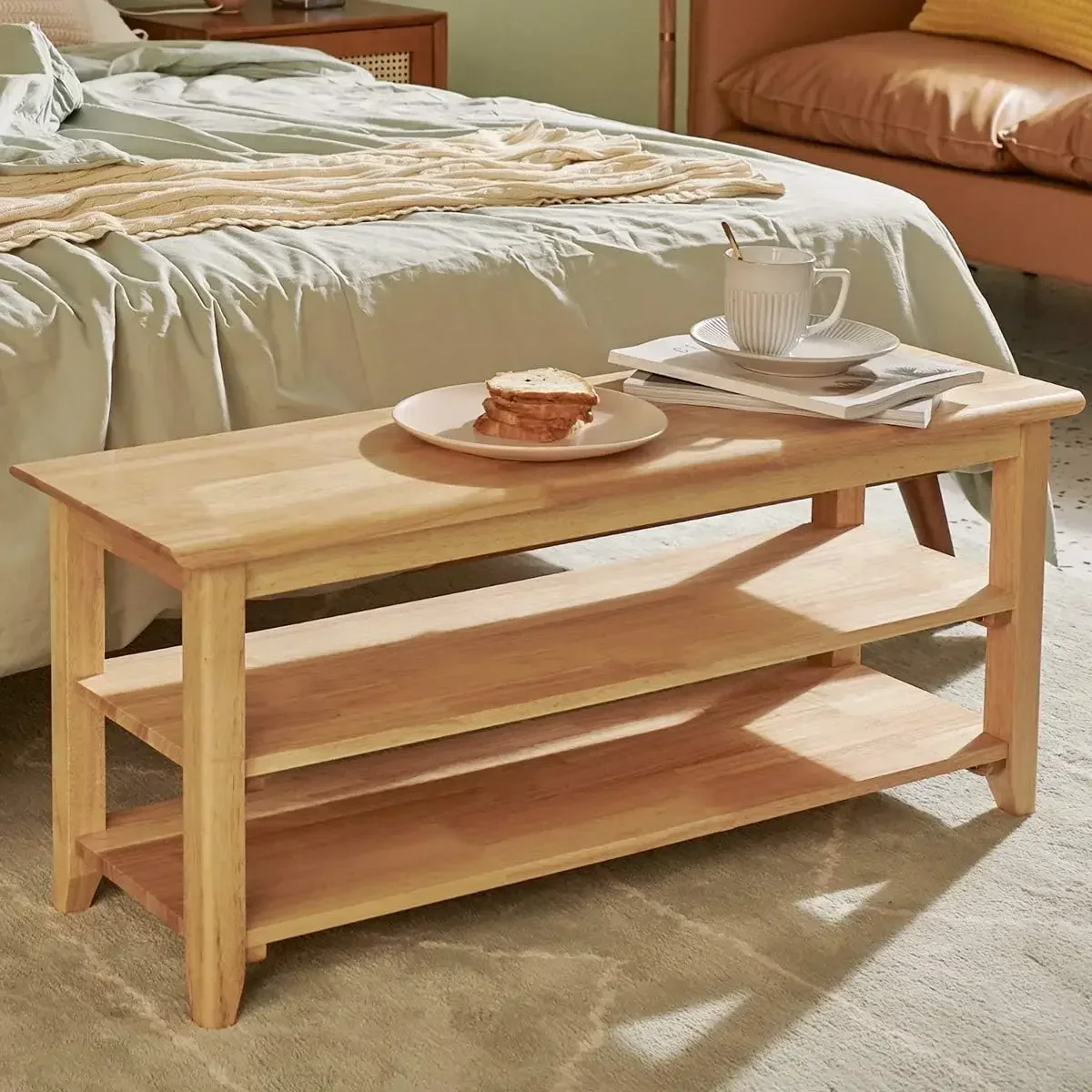
Design and Aesthetics: Elevating Your Home’s First Impression
Beyond pure functionality, an entryway bench serves as a design anchor that sets the tone for your entire home. This piece of furniture helps define the entryway as a distinct space—particularly important in open-concept homes where architectural boundaries between rooms may be minimal.
Available in countless styles from sleek modern designs with clean lines to rustic farmhouse pieces with character and warmth, entryway benches can complement any design aesthetic. Materials range from natural wood that brings warmth and texture, to industrial metal-and-wood combinations that create visual interest, to upholstered options that add softness and color.
The right bench acts as both a functional piece and a design statement. It’s often one of the first items visitors notice when entering your home, making it an opportunity to showcase your personal style. Stylish hidden storage benches offer the perfect combination of form and function, proving that organizational furniture doesn’t have to sacrifice aesthetics.
When selecting a bench, consider how it will interact with existing elements like wall colors, flooring, and nearby furniture to create a cohesive look that flows naturally into the rest of your living space.
Space Assessment: Does Your Entryway Have Room?
Before falling in love with the perfect bench, an honest evaluation of your available space is essential. The ideal entryway maintains a minimum clearance of 36 inches (91 cm) for comfortable passage—enough for two people to comfortably pass each other or move furniture through the space.
Standard entryway benches typically range from:
– Length: 36-60 inches (91-152 cm)
– Depth: 14-18 inches (35-46 cm)
– Height: 18-20 inches (46-51 cm)
For smaller spaces, consider:
– Narrow-profile benches: Narrow entryway bench options with depths of just 12-14 inches (30-35 cm) maintain functionality while minimizing footprint
– Corner benches: Utilize often-wasted corner spaces
– Wall-mounted options: Float seating above the floor to maintain open sight lines and floor space
When measuring your space, don’t just consider the bench itself but also the activity zone around it. Allow approximately 24 inches (61 cm) in front of the bench for comfortable seating and standing. Consider traffic patterns carefully—a bench shouldn’t create an obstacle course for daily movement.
For particularly challenging spaces, small entryway bench solutions offer creative approaches to maximize every square inch without compromising on functionality.
Assessing Your Household’s Needs: Who Benefits Most?
Different household compositions have unique entryway requirements, making some homes natural candidates for entryway benches while others might benefit from alternative solutions.
Families with children often find entryway benches indispensable. The constant flow of backpacks, sports equipment, and the daily shoe shuffle becomes manageable with dedicated storage. Children benefit from having a designated spot to sit while managing footwear, and parents appreciate the reduced clutter and organization.
Pet owners face unique entryway challenges—muddy paws, leashes, toys, and pet accessories all need homes. A bench with storage provides a transition zone where pets can be wiped down and supplies can be stored, preventing the spread of dirt throughout the home.
Active households with frequent comings and goings benefit greatly from entryway organization. Whether it’s multiple family members on different schedules or individuals with active lifestyles, the transition space a bench provides helps maintain order amid constant movement.
Empty nesters or singles might question the need for substantial entryway furniture. However, even households with fewer occupants accumulate items that benefit from thoughtful organization. Additionally, having seating becomes increasingly valuable as we age and appreciate the stability when changing footwear.
Organizing small entryways with benches becomes particularly important for growing families who need maximum functionality from minimal square footage.
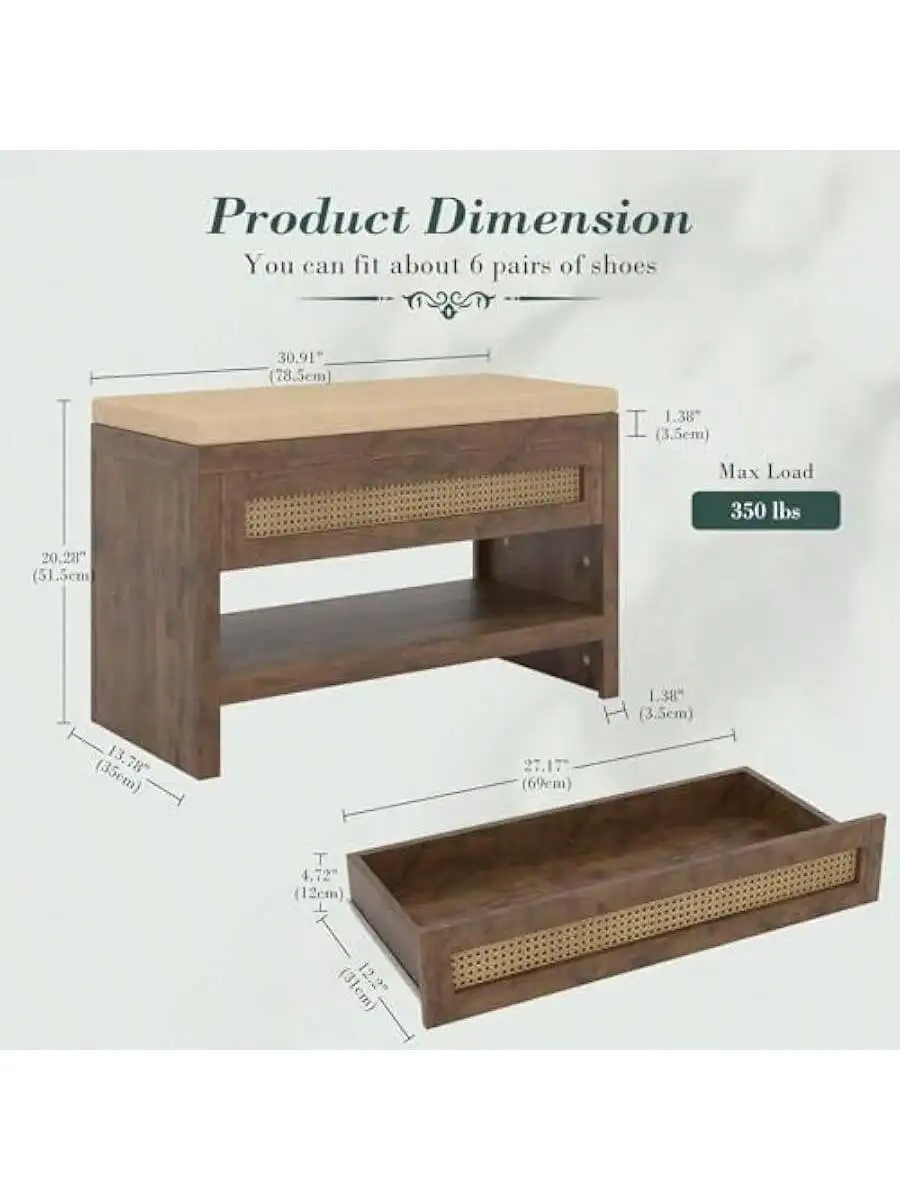
Budget Considerations: Investment vs. Value
Entryway benches represent a furniture investment that varies widely in price based on materials, construction quality, design complexity, and storage features. Understanding this range helps set realistic expectations:
- Entry-level options: $100-$200 for basic designs with limited storage
- Mid-range quality: $200-$400 for solid construction with better materials and more storage features
- Premium pieces: $400+ for heirloom-quality construction, premium materials, and designer aesthetics
While budget considerations are important, viewing an entryway bench as an investment rather than an expense offers perspective. Quality pieces that withstand daily use typically feature solid wood construction rather than particleboard, reinforced seating areas, and durable hardware for any moving parts.
The value proposition extends beyond the furniture itself—consider the organizational benefits, time saved searching for items, reduced stress from visual clutter, and the improved functionality of your entryway. Affordable entryway bench solutions are available that don’t compromise on essential features while respecting budget constraints.
Remember that multi-functional furniture often replaces the need for multiple single-purpose items, potentially saving money in the long run while providing better organization.
Entryway Bench with Cushion, Mudroom Bench with Cushion, Shoe Bench for Entryway
$1,186.63 Select options This product has multiple variants. The options may be chosen on the product pageCoat Rack Shoe Bench, Corner Entryway Bench, Corner Hall Tree, Shoe Bench for Entryway
$313.58 Select options This product has multiple variants. The options may be chosen on the product pageEntryway Bench with Back, Modern Entryway Bench, Shoe Bench for Entryway
Price range: $463.13 through $474.44 Select options This product has multiple variants. The options may be chosen on the product pageShoe Storage Bench for Entryway
$459.02 Select options This product has multiple variants. The options may be chosen on the product pageEntryway Bench with Shelf Storage, Shoe Bench for Entryway, Shoe Storage Bench
$194.08 Select options This product has multiple variants. The options may be chosen on the product pageCorner Entryway Bench, Entryway Bench with Cushion, Modern Entryway Bench, Shoe Bench for Entryway
$476.34 Select options This product has multiple variants. The options may be chosen on the product page
When a Bench Might Not Be Right for You
Despite their many benefits, entryway benches aren’t universal solutions for every home. Several scenarios might indicate that alternative options would better serve your needs:
Extremely limited space where the minimum passage clearance (36 inches/91 cm) cannot be maintained might make a bench impractical. Forcing a bench into too small a space creates more problems than it solves by impeding natural movement through your home.
Rarely used formal entryways that see minimal daily traffic might not justify the functional aspects of a bench. Homes with multiple entrances often have a primary “working entrance” (typically through a garage or side door) where organizational furniture makes more sense.
Rental properties with specific restrictions might limit your ability to optimize the entryway as desired, making temporary or alternative solutions more appropriate.
If you already have established storage systems that effectively manage entryway items, adding a bench might be redundant. The goal should always be improved functionality rather than simply adding furniture.
Common complaints from bench owners typically involve purchasing units that were too large for the space, had insufficient storage for their specific needs, or were made of materials that didn’t withstand daily use—all issues that can be avoided with careful planning.
Alternatives to Entryway Benches: Other Solutions to Consider
If you’ve determined that an entryway bench isn’t ideal for your situation, several alternatives provide similar benefits through different approaches:
Console tables offer a slimmer profile (typically 12-15 inches/30-38 cm deep) while providing a surface for keys, mail, and decorative items. They work well in narrower spaces but lack seating functionality. Pairing with decorative baskets underneath can add some storage capability.
Wall-mounted solutions like hook systems, floating shelves, or compact shoe cabinets take advantage of vertical space without consuming floor area. These are particularly valuable in very small entryways where floor space is at a premium.
Dedicated shoe cabinets offer specialized storage with a smaller footprint than many benches. Often just 12 inches (30 cm) deep, these cabinets maximize shoe organization while minimizing spatial impact.
Freestanding coat racks with built-in shoe storage provide vertical organization without permanent installation—ideal for renters or those who might want flexibility to rearrange their space.
Multi-use furniture for limited foyer spaces presents creative alternatives that combine various functions to maximize utility in challenging spaces.
Choosing the Perfect Entryway Bench: Key Features to Consider
If you’ve decided an entryway bench is right for your home, focusing on these key features will ensure you select one that serves your needs beautifully for years to come:
Appropriate dimensions should be your first consideration. Beyond fitting the available space, ensure the height (typically 17-19 inches/43-48 cm) provides comfortable seating for most users. Depth should accommodate adults sitting comfortably while not protruding too far into walkways.
Material selection significantly impacts both aesthetics and longevity. Solid wood offers traditional durability but requires occasional maintenance. Metal components provide strength in high-stress areas like legs and supports. Upholstered elements add comfort but should feature stain-resistant fabrics for this high-traffic area.
Storage configuration should align with your specific organizational needs:
– Cubbies work best for households needing visible, easily accessible storage
– Drawers conceal items but may be less convenient for frequently used objects
– Lift-top storage provides large capacity but may be less practical for items needed multiple times daily
– Open shelving offers easy access but requires discipline to maintain a tidy appearance
Shoe storage benches for entryways provide specialized organization for the most common entryway item, with designs engineered specifically for footwear storage.
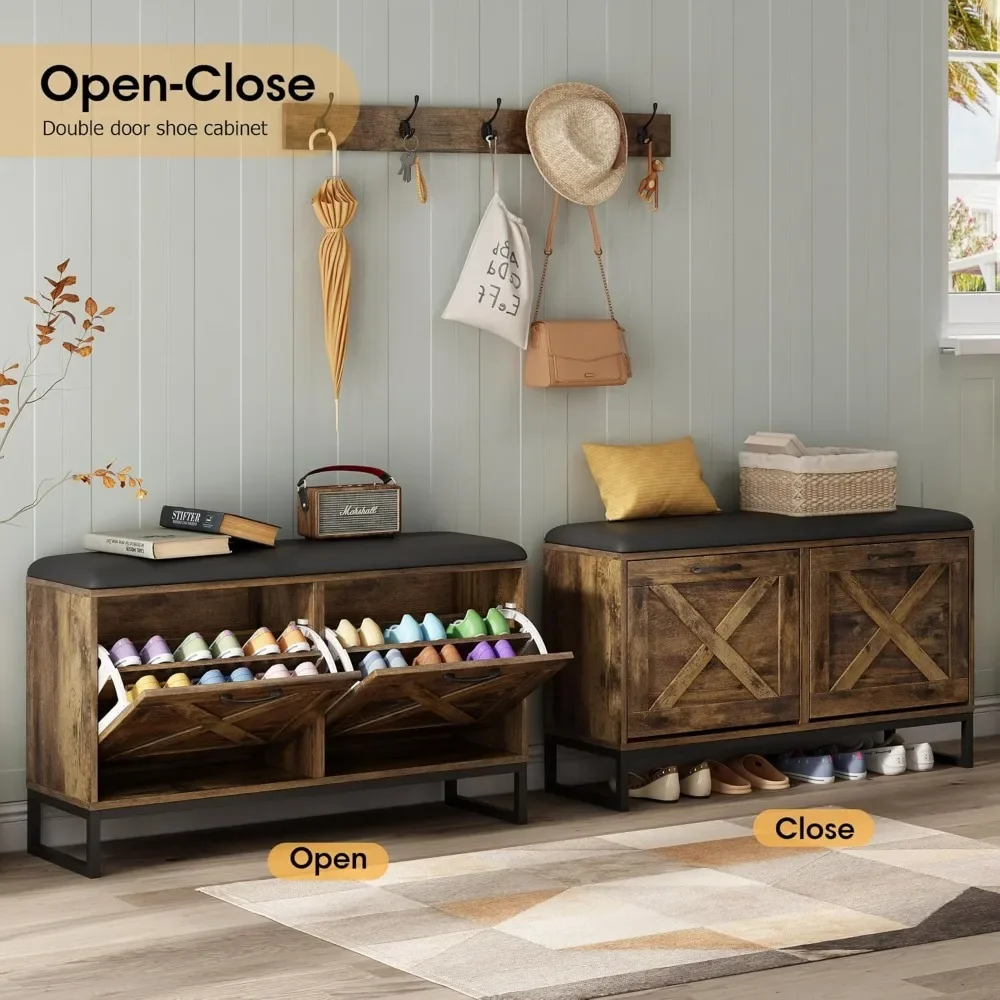
Styling Your Entryway Bench: Creating a Functional Welcome
Once you’ve selected the perfect bench, thoughtful styling transforms it from mere furniture into a welcoming focal point that expresses your personal style while maintaining functionality:
Soft elements like cushions, small pillows, or throws add comfort and color while softening hard surfaces. These can be easily switched seasonally to refresh your space with minimal investment.
Storage baskets or bins within cubbies help corral smaller items while adding texture and visual interest. Consider labeled options for family members to maintain organization.
The wall space above your bench offers additional styling opportunities through artwork, mirrors (which visually expand smaller spaces), or additional hooks for frequently used items.
Proper lighting—whether through overhead fixtures, wall sconces, or a small table lamp if space permits—not only illuminates the functional aspects of your entryway but creates ambiance and highlights your styling efforts.
Finding the right balance between decoration and functionality is key—the most beautiful bench arrangement fails if it impedes daily use. Complementary items for styling your entryway bench can enhance both the visual appeal and functionality of this important space.
Is an Entryway Bench Worth It? Making Your Final Decision
After considering all factors—space requirements, household needs, budget constraints, and alternative options—you can make an informed decision about whether an entryway bench deserves a place in your home.
A simple decision framework might include these questions:
– Do you consistently struggle with entryway organization?
– Would having a designated place to sit while managing footwear be valuable?
– Is there sufficient space for a bench without impeding movement?
– Would the storage features address specific clutter challenges you face?
– Does your budget allow for a quality piece that will serve you long-term?
For many households, the answer to these questions is a resounding “yes,” making an entryway bench one of the most practical furniture investments for improving daily life. The combination of seating, storage, and style addresses multiple needs simultaneously, exemplifying what good design should accomplish.
The benefits of multi-functional entryway furniture often outweigh the initial investment through improved organization, reduced stress, and enhanced home functionality—qualities that are difficult to assign a monetary value but significantly impact quality of life.
Questions About Specific Entryway Situations
What if my entryway is extremely narrow?
For entryways less than 48 inches (122 cm) wide, consider wall-mounted flip-down seating that can be folded away when not in use, or explore ultra-narrow bench options designed specifically for tight spaces with depths of just 10-12 inches (25-30 cm).
How can I make an entryway bench work in a rental property?
Freestanding options that don’t require wall attachment provide flexibility while offering the same benefits. Look for lighter-weight designs that can move with you to future homes.
Can entryway benches work in unusual layouts?
Custom-sized or corner designs address challenging architectural features like angled walls or non-rectangular spaces. Some homeowners repurpose benches designed for other areas, like dining benches, when standard entryway furniture doesn’t fit unusual dimensions.
Solutions for challenging narrow entryway spaces provide specific strategies for common but difficult layouts that require creative approaches.
How to Maximize a Small Entryway with a Bench
Small entryways require thoughtful planning but can still accommodate bench solutions through strategic approaches:
Vertical thinking maximizes often-overlooked wall space above and around your bench. Wall-mounted shelves, hooks, or cabinets expand storage capacity without consuming precious floor space.
Multi-functional designs offer the biggest return on your space investment. Look for pieces that combine seating, storage, and perhaps even charging stations for electronic devices or mirror functions.
Visual expansion techniques like using mirrors above the bench, selecting furniture with legs that allow visibility underneath (creating a sense of openness), and choosing lighter colors all help prevent a cramped feeling.
Scale-appropriate accessories maintain function without overwhelming small spaces. Smaller baskets, minimalist hooks, and appropriately sized decor prevent the cluttered feeling that can make small spaces feel even tighter.
With the right approach, even modest entryways can be transformed into organized, welcoming spaces that set the perfect tone for your home. The key is selecting pieces specifically designed for smaller dimensions rather than trying to squeeze standard-sized furniture into insufficient space.

